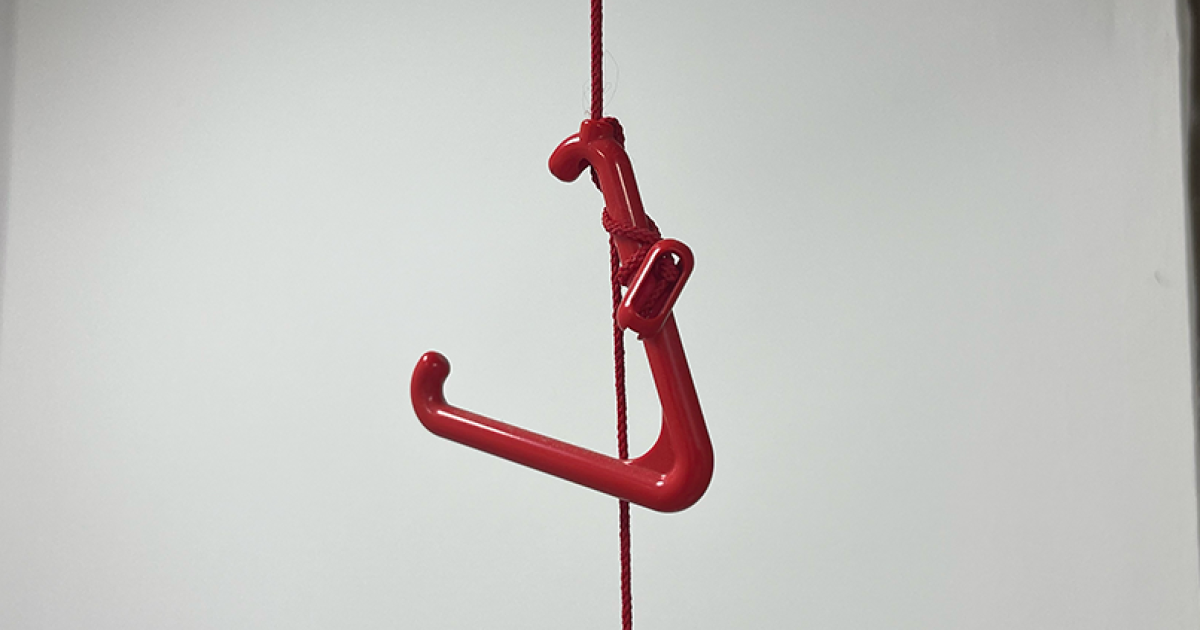Why an Antibacterial Pull Cord is Key to Healthcare Hygiene
Date: 12/11/25

Even with the most vigorous and dedicated cleaning regime, there are still a number of infection risks in any healthcare setting that no amount of cleaning can prevent. These present a hidden risk in what may otherwise appear to be a safe and hygienic environment.
Pull cords, as used for lighting, emergency alarms and nurse calls, are one such danger area, with traditional nylon pull cords harbouring bacteria on moist and porous surfaces.
In this article, we’ll take a look at the hidden risks of pull cords and how you can easily and affordably prevent this by using Cordgenic antibacterial pull cords from Sleeve It.
The Hidden Risk: Cross-Contamination from Standard Pull Cords
Pull cords present a high risk because they are touched regularly by patients, staff and visitors alike. This risk is increased by the fact that pull cords are often located in bathrooms and toilets, for both lights and emergency calls.
What Makes Pull Cords a High-Risk Surface?
Standard nylon pull cords are a breeding ground for bacteria in a number of ways. They are porous, they absorb sweat and bodily fluids, and they are incredibly difficult to clean. This creates the ideal conditions for bacteria to breed. Even washing your hands before you leave the bathroom can present a risk, if you touch a dirty pull cord with moist hands, as this can facilitate the transfer of bacteria.
What Are Antimicrobial Pull Cords and How Do They Work?
Antibacterial pull cords avoid many of the risks associated with nylon pull cords because they are plastic-coated. This prevents absorption of moisture and removes the risk from bacteria penetrating porous surfaces.
Unlike nylon cords, the moisture resistant plastic surface of antibacterial medical pull cords means that they can be cleaned with the kind of high-strength modern disinfectants used in hospitals and health care.
In addition, Cordgenic from Sleeve It has antibacterial properties within the plastic coating to further enhance the protection it offers. This inhibits the growth of bacteria on the cord in between cleaning.
Nylon Cord vs Antibacterial Cords: A Direct Comparison
When you see the properties of antibacterial and nylon pull cords side by side, it is easy to see the benefits. And with hygienic pull cords around the same price as standard nylon cords, the decision couldn’t be easier.
| Antibacterial cord | Nylon cord | |
| Absorption | Will not absorb fluids | Absorbs fluids |
| Bacterial resistance | Built in anti-bacterial properties | No anti-bacterial properties |
| Ease of cleaning | Can be easily cleaned | Hard to clean |
| Longevity | Does not need replacing | Needs regular replacement |
| Durability | Resists breakage in normal use | Breaks easily in normal use |
| Cost | Comparable with nylon cord | Rises with each replacement |
Essential Applications for Hygienic Pull Cords
Antibacterial pull cords are essential in high-risk areas such as bathrooms and toilets, but for maximum protection, they should also be installed throughout your healthcare facility, including staff areas, patient bedsides and visitor rooms.
Practical applications of an antibacterial pull cord includes:
-
Hospitals, both NHS and private
-
Health clinics and outpatient units
-
Care homes and nursing homes
-
Dental surgeries
-
Restaurant kitchens and staff canteens
Cordgenic from Sleeve It comes supplied in 100m rolls, making it easy to update your whole department, ward or clinic quickly and easily.
Frequently Asked Questions
Q: What is the difference between antibacterial and antimicrobial?
A: Antibacterial products are designed to combat bacteria such as those seen in Health Care Acquired Infections (HCAI) like C.Diff and MRSA. Antimicrobial products offer wider protection that includes non-bacterial sources such as mould and fungi.
Q: How often should you clean an antibacterial pull cord?
A: Because they are plastic coated, an antibacterial pull cord can be cleaned regularly as part of your normal cleaning regime. Standard hospital disinfectants can be used, as the surface is non-porous. This kind of cleaning is not possible with nylon cords.
Q: Can I replace my existing fabric pull cords with antibacterial ones?
A: Yes, a nylon cord can easily be replaced with an antibacterial pull cord, either during repairs to broken cords, or as a complete retrofit upgrade of your unit. Once installed, the plastic coating of an antibacterial pull cord makes it significantly more durable than nylon cords, so it will not need to be replaced as often.
Q: Is a Cordgenic antibacterial pull cord compliant?
A: Yes. They comply with ISO 22196 standards. The Sleeve It antibacterial pull cord has been independently tested and demonstrated an excellent antimicrobial effect against both S. aureus and E. coli, more than sufficient to pass the ISO 22196 test specification. (https://cordgienic.com/Downloads/CordgienicJan10.pdf)
Q: Where can I buy medical-grade pull cords in the UK?
A: Sleeve It is a trusted British supplier of antibacterial pull cords, along with a wide range of other key protection products. We can deliver next day across the UK and also deliver worldwide.
Enhance the safety of your premises, your patients and your people today
Cordgienic antibacterial pull cords cost around the same as standard nylon cord, making hygiene and safety easily affordable. Cordgenic is available in white for lights, and orange and red for emergency pull cords, in a choice of 1.8mm or 3.2mm widths. For more details, visit our website or contact our team if you have any questions.
0 Comment
Add your Comment
We have the ability to edit and/or delete posts and comments. Links should be relevant to the topics. Please note all comments are subject to review before inclusion.

Nobody has commented yet. Why not add one?